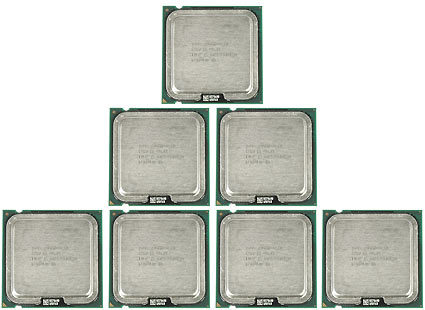Parallel Processing, Part 1: CPU Cores
Single, Dual Or Quad Core?
The race for more performance in the processor segment can only be won by manufacturers who focus on a reasonable balance of clock speed and processing units, based on the existing manufacturing technology. With availability of 90 nm and 65 nm manufacturing processes, processors with more than one unit became possible thanks to manageable heat dissipation and die sizes, and we’re looking at more and more quad core processors today. But how does current software really scale from single to dual and quad cores?
In an ideal world, thread-optimized software allows the operating system to distribute multiple threads across the available processing units, whether these are found on a single processor or multiple processors with a single or multiple cores. Adding more cores can unleash much more performance than any clock speed increase. This makes sense: obviously, more workers are almost always faster than fewer faster workers.
But what about four and more workers per processor? In this case, there might not always be enough work to saturate four or more units. It can also be tricky to distribute the workloads to the workers, meaning that the physical interfaces - such as HyperTransport (AMD) or the Front Side Bus (Intel) - might become a bottleneck in certain scenarios. As a third option, the mechanism that distributes the workloads, which is the operating system’s dispatcher, may also become a bottleneck.
AMD’s transition from single core to dual core processors was almost seamless, as the company had not maxed out thermal limits like Intel’s Pentium 4 processors. Hence, the Athlon 64 X2 was expensive but reasonable, while the Pentium D 800 series became extremely hot. Intel’s 65 nm processors, and the Core 2 processor family in particular, turned the tables. Intel has also been able to combine two Core 2 Duo processors Compare Prices on Intel Core 2 Duo Processors in a single processor package where AMD still hasn’t, which is better known as the Core 2 Quad today. AMD has promised to deliver its Phenom X4 processor before the end of this year.
In this article, we’ll have a look at a Core 2 Duo configuration running a quad core, a dual core and a single core, and compare how the extra cores scale. Is it worth going for a quad core today?
Join our discussion on this topic
Get Tom's Hardware's best news and in-depth reviews, straight to your inbox.

Patrick Schmid was the editor-in-chief for Tom's Hardware from 2005 to 2006. He wrote numerous articles on a wide range of hardware topics, including storage, CPUs, and system builds.
